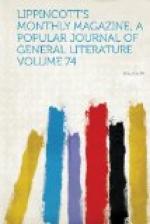The Middle Temple affiliates with the Universities of London and Durham. A residence of three years and the keeping of twelve “commons” entitle a gentleman to be called to its bar, after certain qualifying examinations, if he be above twenty-three years of age. In the Inner Temple (by far the richest and most popular of the two societies) the candidate for admission must have taken his B.A. or passed an examination at the Universities of Oxford, Cambridge, or London. No one in holy orders can be called, and none are admitted without the consent of the benchers. The candidate must also furnish a statement in writing, outlining his rank, age, and residence, accompanied by a voucher as to his respectability signed by a bencher or two barristers. In short, the Inns of Court may be described as universities “with power to grant degrees in the municipal law of England, which constitute indispensable qualifications for practice in the superior courts of law.” To secure these ends they have from time immemorial enjoyed the protection of the crown.
In former times the curriculum was comprehensive and the discipline severe. The fare provided was frugal, and the chambers were sparsely furnished. Luxury was tabooed, and the rules were rigidly enforced. From early morning till the hour of five in the evening, when supper was served, not an hour was wasted. Fortescue, writing in the time of Henry VI., gives a graphic account of these law-schools as they were in his day. “Students resort hither in great numbers to be taught as in common schools. Here they learn to sing and to exercise themselves in all kinds of harmony. On the working days they study law, and on the holy days Scripture, and their demeanor is like the behavior of such as are coupled together in perfect amity. There is no place where are found so many students past childhood as here.” But in these degenerate days, when the jeunesse dorA(C)e decorate their “dens” with Queen Anne furniture, Turkish rugs, and choice bric-A -brac, it has been jocosely said that “dining in hall is the only legal study of Temple students.” Of late years, however, “the best professional sentiment” has strongly and successfully tended in favor of keeping up the standard of these institutions as true seminaries of learning. Ample courses of lectures have been introduced, also subsequent searching examinations.
A glance at a map of the Temple shows conclusively that it has no connected plan. Its growth has been the outcome of the needs of many generations during the last half-dozen centuries, and it is at present a picturesque conglomeration of buildings of all sizes and shapes and styles, erected with no regard for architectural beauty or symmetry, and with no very great adaptability to their past or present use. Aside from the halls and libraries of the two societies, the Church of St. Mary, and one or two blocks of chambers, like Paper Buildings, there is no salient feature to impress the eye. Yet the uniform ugliness of some of the buildings constitutes not the least of their attractions. A hard grayish stone frequently appears, though there are a number of brick houses so mellowed by age that it would be difficult to name their original hue.




